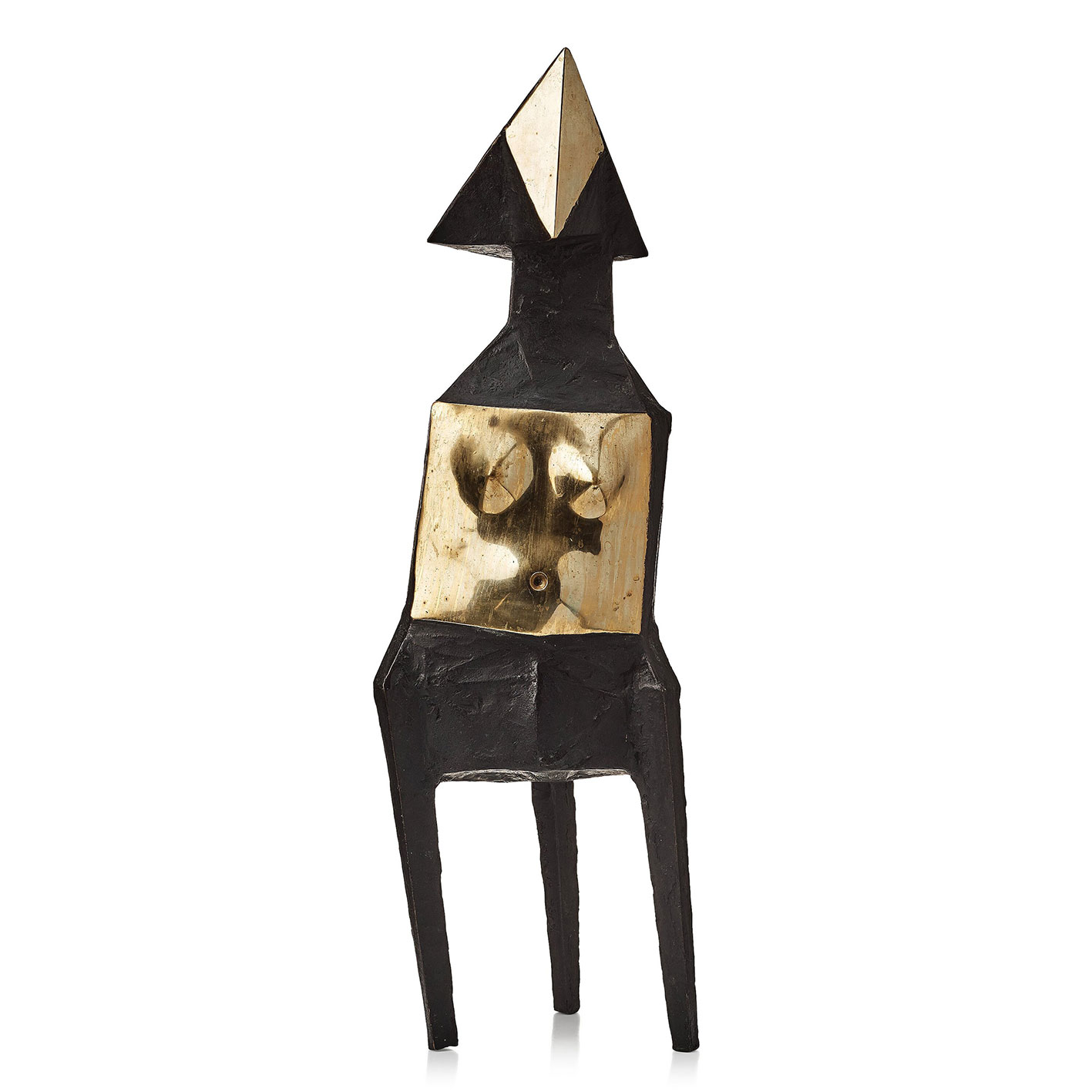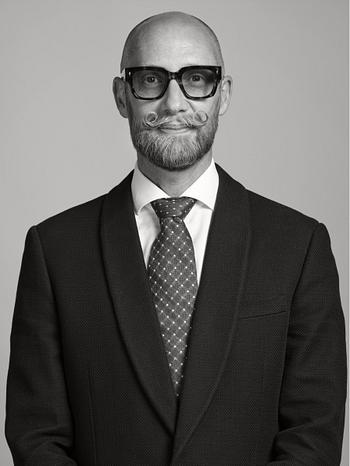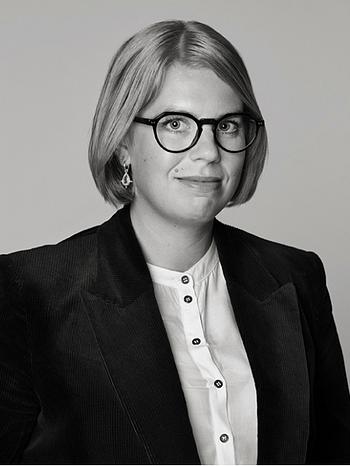Anniversary auctions at Bukowskis presenting Lynn Chadwick
Bukowskis presents Lynn Chadwick, "Maquette I Elektra", nr 579 on the autumn anniversary auction Modern Art + Design.
Lynn Chadwick’s characteristic sculptures are immediately recognisable as his. They have their own distinct voice and form a unique artistic idiom. Majestic, mysterious strangers, hardly resting – more likely watching, they awaken associations and fascinate with their geometrically simplified forms and awkwardly draped cloaks.
Chadwick made his debut on the British art scene soon after the Second World War alongside a new generation of artists. Europe was in ruins and the world was in shock, having just witnessed the horrors of war, genocide and the effects of the atomic bomb. Chadwick served in the war as a pilot for the R.A.F. Yet as a young man he had already wished to dedicate his life to art. His parents’ disapproval made him compromise in his career path, and he decided to study architecture. Before the war he worked as a draughtsman in an architects’ office. Chadwick had no formal art education and perhaps it is possible to discern the strict geometry of architectural drawing in his artistic practice. After the war he was filled with the desire to create, to make something new. Chadwick recounts: “But some of us felt after the war that we had to make something and that painting was exhausted as far as this attempt to make something was concerned. Actually, we didn’t – at least I didn’t – think of sculpture as such. We thought of construction, of building with our hands”. It did, however, take some time before he dared to go the whole way and be an artist, and so for a few years he worked successfully as a designer and an interior architect. During the late 1940s he made a living from designing, amongst other things, display stands, furniture and wallpaper patterns, whilst simultaneously working on his art.

It was with the Venice Biennales of 1952 and 1956 that Chadwick had his major international breakthrough. Since then he has been considered as one of the most important artists of the British postwar period. The expression in Chadwick’s sculptures is highly interlinked with his working methods. Practically self-taught, he invented his own techniques. The method has been described as a kind of three-dimensional drawing with iron rods, where Chadwick first curved and shaped the rods into the desired form and then welded them together. Next he filled the sections that were to be solid. In some sculptures he used metal plates, which created the impression of ‘metal skin’. It wasn’t until the end of the 1950s that he also began casting in iron. Chadwick placed great significance on the sculptures’ patina and worked a lot with the structure and nuances of colour in the surfaces.
He further recounts: “I think that my personal idiom came through my technique, really, and because I worked in this way these images came this way and I couldn’t have done it any other way. I couldn’t have painted this and I couldn’t have carved this in wood because it would have come out quite differently. I wouldn’t have been able to do it. Everything is because of, shall we say, the limitations of my technique.”
The triangle in different executions is the fundamental geometric shape in Chadwick’s art, sometimes joined together to create rectangles. This form, placed vertically or diagonally (rarely horizontally), constitutes the framework of the sculptures and creates their formal tension. The artist suggested himself that the triangle was to be regarded as the simplest outline of a human or animal figure, and that it was from this shape that the body was created. He emphasised how he always began from the human in his art, as he explained, “I shall never neglect humanity. Even in my most abstract figure ‘The Pyramids’ I took man as a starting point… The stars can be seen as heads with a single eye and the pyramids can begin to suggest a figure or beast”.
In contrast to many of his contemporary sculptors, inspired by ethnographic or classical art, Chadwick found much of his inspiration in modern architecture.
The object in the auction, Maq I Elektra, from 1969, is an exquisite example of Chadwick’s late 1960s production. At this time he had returned to his human-like figures, after a period in the 60s when he experimented with more minimalist and abstract work as well as with techniques such as assemblages of found objects. In this phase he began using the representational geometric forms of the triangle and the rectangle as symbols of man and woman. Chadwick has himself never explained or given any interpretations of his sculptures. This leaves the viewer free to let their own imagination and associations wander around these powerful and mysterious figures.
When is the viewing and auction?
Bukowskis Modern Art + Design
Viewing 19 – 23 November, Berzelii Park 1, Stockholm, Opening hours: Mon–Fri kl 11–18, Sat–Sun kl 11–17
Auction 24 – 25 November, Arsenalsgatan 2, Stockholm
Contact our specialists




























